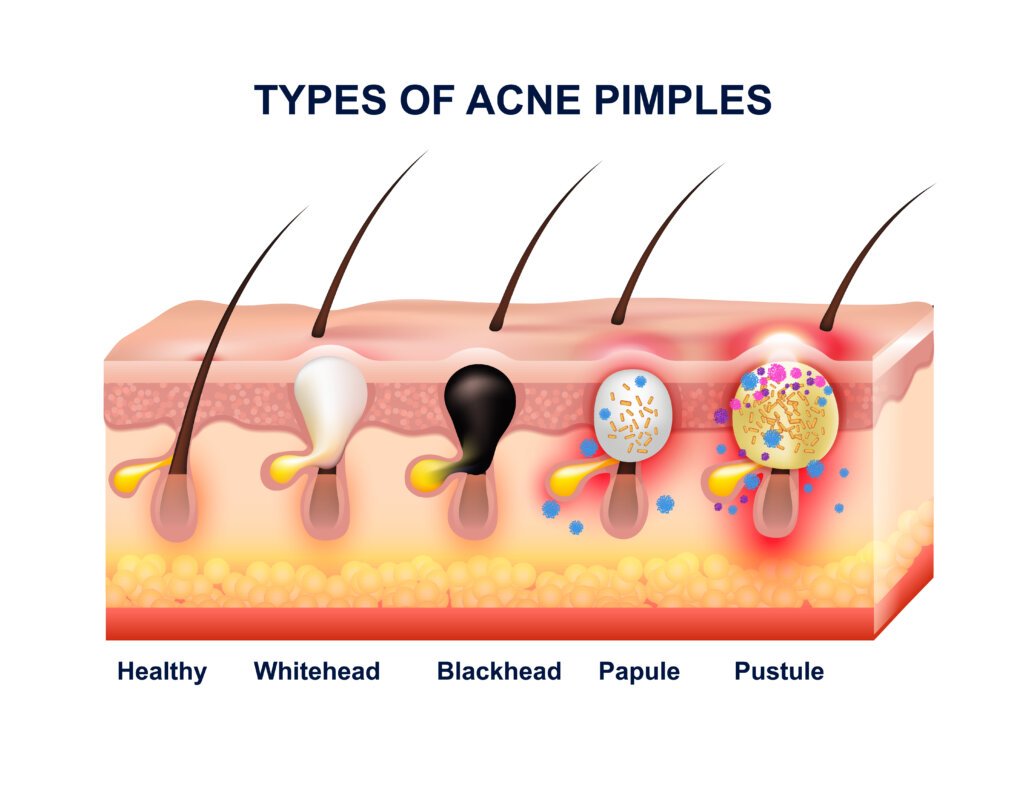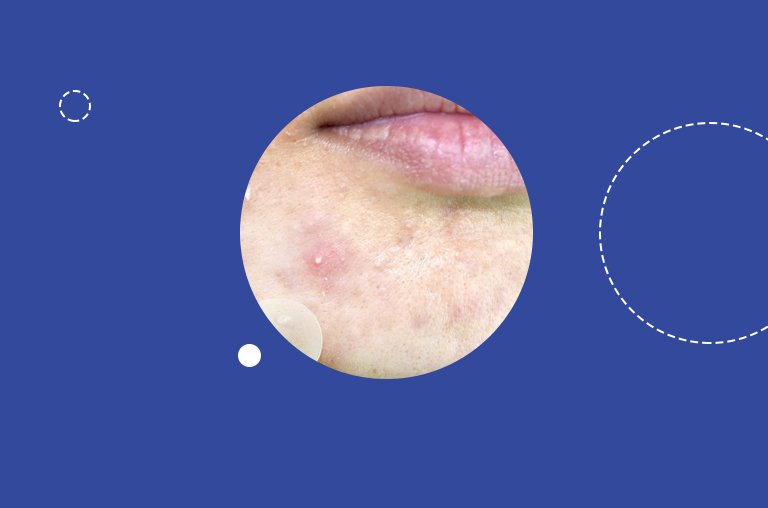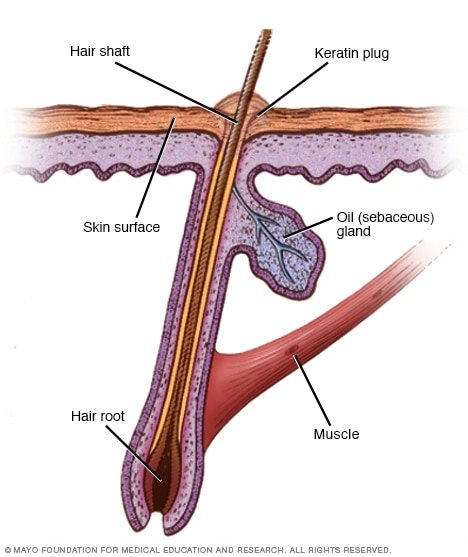Use gentle exfoliants to remove dead skin cells trapped along with keratin. You can try gentle acids like topicals or peels that have lactic, salicylic or glycolic acid. If exfoliation doesn't work, a dermatologist may suggest stronger prescription creams to help dissolve them.
Why am I getting so many keratin plugs?
They form when keratin clumps together in the hair follicles, forming a plug. Providers believe the bumps form when the skin gets irritated. This usually comes from friction or if your skin is too dry. Keratin plugs may be inherited (passed down through families).
How do you get rid of keratin lumps?
Try not to scratch the bumps. Treat the skin gently and avoid using harsh chemicals, which can dry out the skin. Wash using a mild soap and warm, rather than hot, water. Gently pat or blot the skin dry and follow up by applying a soothing moisturising cream that contains lanolin, petroleum jelly or glycerine.
How do you get rid of hard sebum plugs?
Cleanse: Use a mild cleanser twice a day, in the morning and evening. Never use bar soaps with harsh detergents as these can strip the skin of its natural oil. Exfoliate: Use chemical exfoliants, such as glycolic acid or salicylic acid rather than physical exfoliants, to gently dissolve dead skin cells.
What is the best cream for keratin plugs?
Several of our editors have also tried many of the below treatments for KP bumps and dry, itchy skin.
- CeraVe SA Lotion For Rough & Bumpy Skin.
- AmLactin Daily Moisturizing Lotion.
- First Aid Beauty KP Bump Eraser Body Scrub.
- Eucerin Roughness Relief Cream.
- Ebanel 40% Urea Cream.
- Gold Bond Rough & Bumpy Skin Daily Therapy Cream.
Can you squeeze out keratin plugs?
Keratin plugs usually clear up on their own. They don't require treatment. Never pick at, squeeze or try to “pop” a keratin plug. Doing so can cause irritation and scarring.



What is the hard stuff in my pores?
A keratin plug is a small, often hardened mass that forms when the protein accumulates and blocks a hair follicle or pore. Keratin plugs are associated with skin conditions like keratosis pilaris or 'chicken skin'.
Frequently Asked Questions
What is the white stringy stuff that comes out of a pimple?
When you squeeze your nose or squeeze a pimple on your nose, there are white substances coming out of the pores, looking like thin strings. It's called the sebaceous filament, which is made up of sebum and dead skin cells that accumulate around hair follicles.
What are keratin plugs under the skin?
Keratosis pilaris develops when keratin forms a scaly plug that blocks the opening of the hair follicle. Usually plugs form in many hair follicles, causing patches of rough, bumpy skin.
Can I pop keratosis pilaris?
Keratosis pilaris
While they aren't harmful, she warns against popping or squeezing them in any way, as doing so can lead to scarring and further irritation. Solution: “It is best to treat keratosis pilaris with a gentle exfoliator that helps eliminate dead skin cells while also softening the skin,” says Dr. Garshick.
What causes trapped keratin?
While there's no one specific known cause, keratin plugs are thought to form due to irritation, genetics, and in association with underlying skin conditions, such as eczema. Keratin plugs can resolve on their own without treatment, but they can also be persistent and recur.
When keratin becomes trapped beneath the surface of the skin?
Milia occur when keratin becomes trapped beneath the surface of the skin.
What dissolves keratin in skin?
Salicylic acid to break up the keratin, causing the thick skin to soften and be shed, thus reducing the thickness of the skin. Urea-based agents to increase the content of water in the skin and soften the area. This can help to break up the keratin, although to a lesser extent than salicylic acid.
What is a keratin bump?
Keratosis pilaris is a common condition where small bumps develop on your skin, especially your arms, legs or butt. Excess keratin in your skin causes bumps to form. This condition is harmless and typically doesn't need treatment, and usually fades by age 30. Treating dry skin with a gentle skin care routine can help.
FAQ
- How do you get rid of keratin acne?
- Try not to scratch the bumps. Treat the skin gently and avoid using harsh chemicals, which can dry out the skin. Wash using a mild soap and warm, rather than hot, water. Gently pat or blot the skin dry and follow up by applying a soothing moisturising cream that contains lanolin, petroleum jelly or glycerine.
- What causes keratin pimples?
- Keratosis pilaris is caused by the buildup of keratin — a hard protein that protects skin from harmful substances and infection. The keratin blocks the opening of hair follicles, causing patches of rough, bumpy skin. It's not clear why keratin builds up in people with keratosis pilaris.
- How do I stop keratin plugs on my face?
- You may be able to remove keratin bumps by exfoliating and moisturizing. A dermatologist can remove stubborn plugs. A keratin plug is a type of skin bump that's essentially one of many types of clogged pores. Unlike acne though, these scaly bumps are seen with skin conditions, especially keratosis pilaris.
- What breaks down keratin plugs?
- Electrolytically generated hydrogen warm water cleanses the keratin-plug-clogged hair-pores and promotes the capillary blood-streams, more markedly than normal warm water does.
- Should you squeeze keratosis pilaris bumps?
- Fortunately, keratosis pilaris isn't harmful, only annoying. It doesn't lead to long-term damage to your skin. To prevent scarring or infection, you shouldn't pick at, scratch or try to pop your keratosis pilaris.
- Do keratin plugs go away?
- Keratin plugs aren't unusual skin bumps, but they can sometimes be difficult to distinguish from acne. These keratin-filled plugs may go away on their own with time and with the use of lifestyle remedies.
What causes keratin plugs
| What does a sebum plug look like? | A sebum plug can look like a tiny bump under the surface of the skin or it may stick out through the skin like a grain of sand. |
| What dissolves sebum plugs? | 6 tips for treating sebum plugs
|
| Can keratin plugs be black? | Keratosis pilaris bumps resemble small pimples or goosebumps that can sometimes itch. The bumps form when dead skin cells form plugs in other skin cells. On darker skin, keratosis pilaris bumps may appear brown or black. On lighter skin, they usually appear white, pink, or red. |
| How do you prevent keratin plugs? | While it may be difficult to prevent keratin plugs entirely, you can help get rid of them and prevent others from occurring by:
|
| What causes the body to produce too much keratin? | Keratin is a tough, fibrous protein found in fingernails, hair, and skin. The body may produce extra keratin as a result of inflammation, as a protective response to pressure, or as a result of a genetic condition. Most forms of hyperkeratosis are treatable with preventive measures and medication. |
| What is the root cause of keratosis pilaris? | Keratosis pilaris develops when keratin forms a scaly plug that blocks the opening of the hair follicle. Usually plugs form in many hair follicles, causing patches of rough, bumpy skin. Keratosis pilaris is caused by the buildup of keratin — a hard protein that protects skin from harmful substances and infection. |
- What causes the body to produce more keratin?
- Several specific nutrients are essential for keratin synthesis, including protein, biotin, and vitamin A. Enjoying a balanced diet filled with foods rich in these nutrients can help promote keratin production in your body.
- What depletes keratin in the body?
- Keratin, an essential protein in the structure of hair, has long been used as an ingredient in hair strengthening products. Made up of long chains of amino acids, specifically cysteine, it forms a protective sheath around the hair shaft, but this depletes as a result of styling and other external stressors.
- What does a keratin plug feel like?
- Keratin bumps are rough to the touch because of their scaly plugs. Touching affected skin in keratosis pilaris is often said to feel like sandpaper. The bumps sometimes look and feel like goosebumps or “chicken skin.” Keratin plugs may also become itchy sometimes.
- Are keratin plugs contagious?
- Keratosis pilaris is a very common skin condition in which keratin forms hard plugs in the hair follicles. It is an inherited disorder running in families with a 1 in 2 chance of each child inheriting it from an affected parent. Keratosis pilaris is not infectious.
- What causes keratin buildup in pores?
- The reason for the build-up of keratin is unknown, but it often occurs alongside other skin conditions, such as dermatitis. In most cases it is a genetic condition that runs in families. Keratosis pilaris is more common in winter, when the skin tends to be drier.
- How do you unclog a keratin plug?
- Use gentle exfoliants to remove dead skin cells trapped along with keratin. You can try gentle acids like topicals or peels that have lactic, salicylic or glycolic acid. If exfoliation doesn't work, a dermatologist may suggest stronger prescription creams to help dissolve them.

